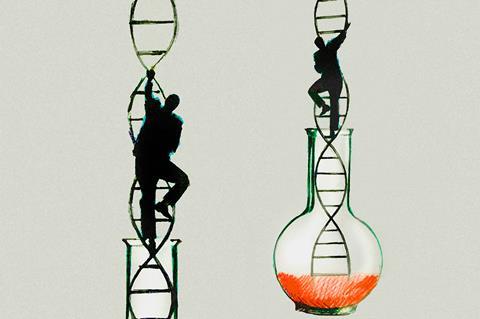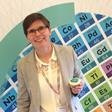Effective strategies to raise the aspirations of students for STEM subjects

We often hear from the government, media and employer groups that the UK faces a shortage in science, technology, engineering and mathematics (STEM) skills. According to the UK Commission for Employment and Skills, 43% of STEM vacancies are hard to fill because of a shortage of applicants with the required skills.
The problem for educators is that most students regard science as ‘not for me’, even though they think science is important. The recent ASPIRES 2 study identified several key factors that shaped a young person’s science identity and aspiration. These factors – although heavily influenced by social characteristics like class, gender and ethnicity –included whether a young person had been given the opportunities to experience, do well in, feel connected to, be recognised in, and continue with STEM. Therefore an important part of teaching is to help students connect with the science they are learning and help them to understand that science is a career they can achieve in, whatever their background.
Exploit local labour
In 2014, the Gatsby Foundation published a framework of eight benchmarks that define the best careers provision in secondary schools. One benchmark highlighted the importance of learning from and having access to up-to-date labour and career market information, which is important for social mobility. If students know the salaries for different jobs and how numerous vacancies are in their area, then they are more likely to make choices that challenge stereotypical assumptions about the right job for ‘people like me.’
Local authorities or Local Enterprise Partnerships can help identify science-related industries that are growing or that have good prospects within your local area. In my area, it’s textiles and engineering. Local heavy plant manufacturer Caterpillar has been very supportive organising visits for our students in the past.
Teachers can then discuss these careers at relevant points to link possible career options to the learning taking place. Picture prompts are one way this can be done in the classroom, as Carol Davenport describes in her article, Including careers in the curriculum.
Teachers can then discuss these careers at relevant points to link possible career options to the learning taking place. Picture prompts are one way this can be done in the classroom, as Carol Davenport describes in her article, ‘Including careers in the curriculum’ (rsc.li/3cqKtUV).
Show them real science
Activities that show real-life applications of science can pull together the ideas presented in school and show how they benefit society. By emphasising the social aspect of the science curriculum, you can break down the stereotype of a scientist as a researcher in a white lab coat working in isolation and encourage a more diverse range of students to engage with the subject.
Companies are often willing to visit local schools to run sessions or invite groups of students to see their facilities. For example, BAE Systems has a roadshow, although Covid-19 means it’s currently suspended. There are a wealth of charities, institutions and organisations that provide outreach events for students, many of which are free. A good place to find out more is to attend events, such as the ASE Conference, where a number of these organisations present. Visits that open students’ eyes to new experiences and bust stereotypes can be especially valuable.
Emphasise transferable skills
There is more to science education than just gaining subject knowledge and subject-specific skills. Science students develop a number of transferable skills that can help them succeed in future employment. To help students realise the value of learning science – even if they don’t see themselves as ‘sciencey’ – plan opportunities for students to develop transferable skills alongside core subject knowledge and emphasise these skills in lesson delivery. Use activities, such as those found in the In Search of Solutions collection, to develop students’ problem solving skills. You can develop student speaking skills through activities such as talk triplets.
There is more to science education than just gaining subject knowledge and subject-specific skills. Science students develop a number of transferable skills that can enable them to succeed in future employment. To help students realise the value of learning science, even if they don’t see themselves as ‘sciencey’, plan opportunities for students to develop transferable skills alongside core subject knowledge and emphasise these skills in lesson delivery. Use activities, such as those found in the In search of solutions collection (rsc.li/2FUTdGM), to develop students’ problem solving skills. You can develop student speaking skills through activities such as talk triplets (rsc.li/3cA3wMA).
Transferable skills developed through science education
- Lateral thinking
- Critical thinking
- Problem solving
- Teamwork
- Organisation
- Resilience
- Numeracy and IT skills
- Communication
Develop alumni networks
Having grown up in the same area and perhaps having had some of the same teachers, former students are ideal role models. Former students are easily accepted by current students and bring with them credibility as someone who has overcome similar challenges during their school education.
It can be difficult to keep track of students once they move on to pastures new. School social media sites are great starting points to get in touch with ex-students. Alternatively, charities, such as Future First, help schools establish networks. Alumni networks can provide guidance and inspiration to students through mentoring or work experience when invited to events, such as careers fairs, to share their experiences. Initially, the numbers of students keeping in touch may be small, but numbers will quickly rise as students who benefitted move on to become alumni themselves.
If students are to believe science is something they can achieve in, it is important that alumni are not just those students seen as the high-flyers of their day. Invite alumni who represent a cross-section of the careers and employment routes available to the full spread of students in the school.
Link with primary schools
The ASPIRES study mentioned above also recommended that efforts to broaden students’ aspirations, particularly in relation to STEM, need to begin at primary school. By the age of 10, a young person’s aspiration to be a scientist is established and remains stable.
To ensure that young people are not closed off to the idea of a career in science before entering secondary school, establish a relationship with local primary science leads to share good practice. Invite local primary schools to use the secondary school facilities during dedicated science or STEM days. Older student helpers are excellent role models for younger children on such days.
There is no quick fix to increasing the diversity of students who aspire to be scientists, but by making small changes to our practice and establishing links with local companies and primary schools, we can make progress to break down stereotypes and show all students that science is for them.
Catherine Smith is a secondary school teacher at Hinckley Academy and John Cleveland Sixth Form Centre, an 11–18 academy in Leicestershire














No comments yet